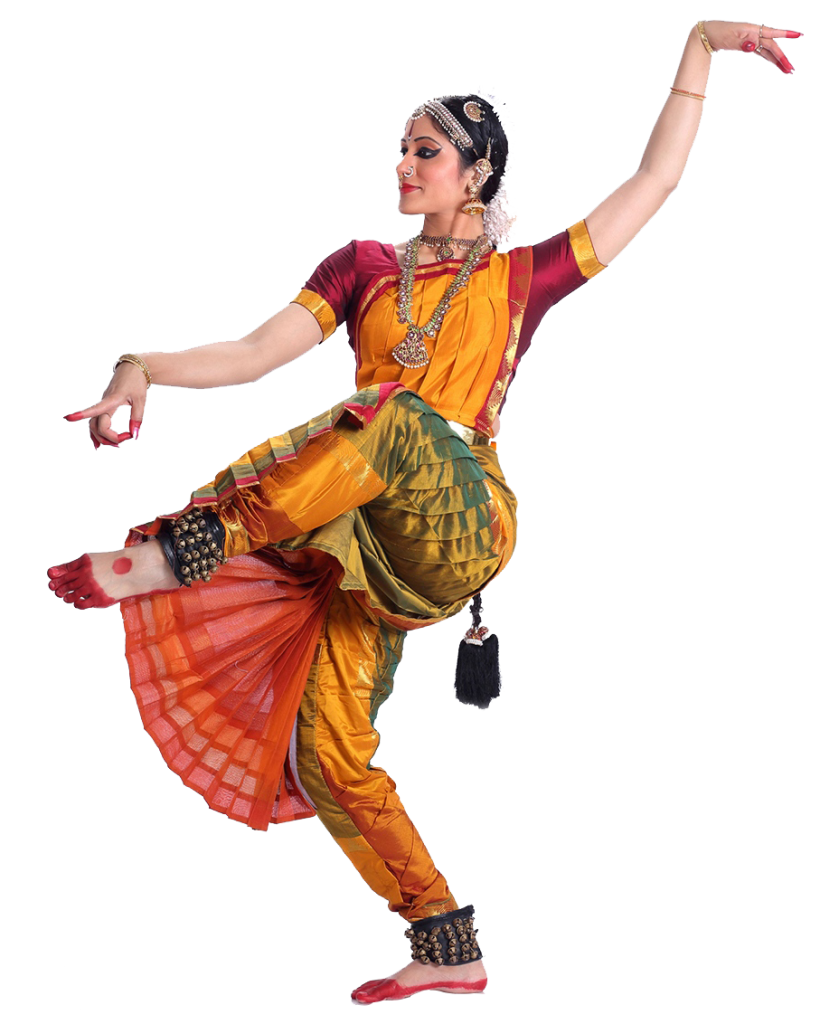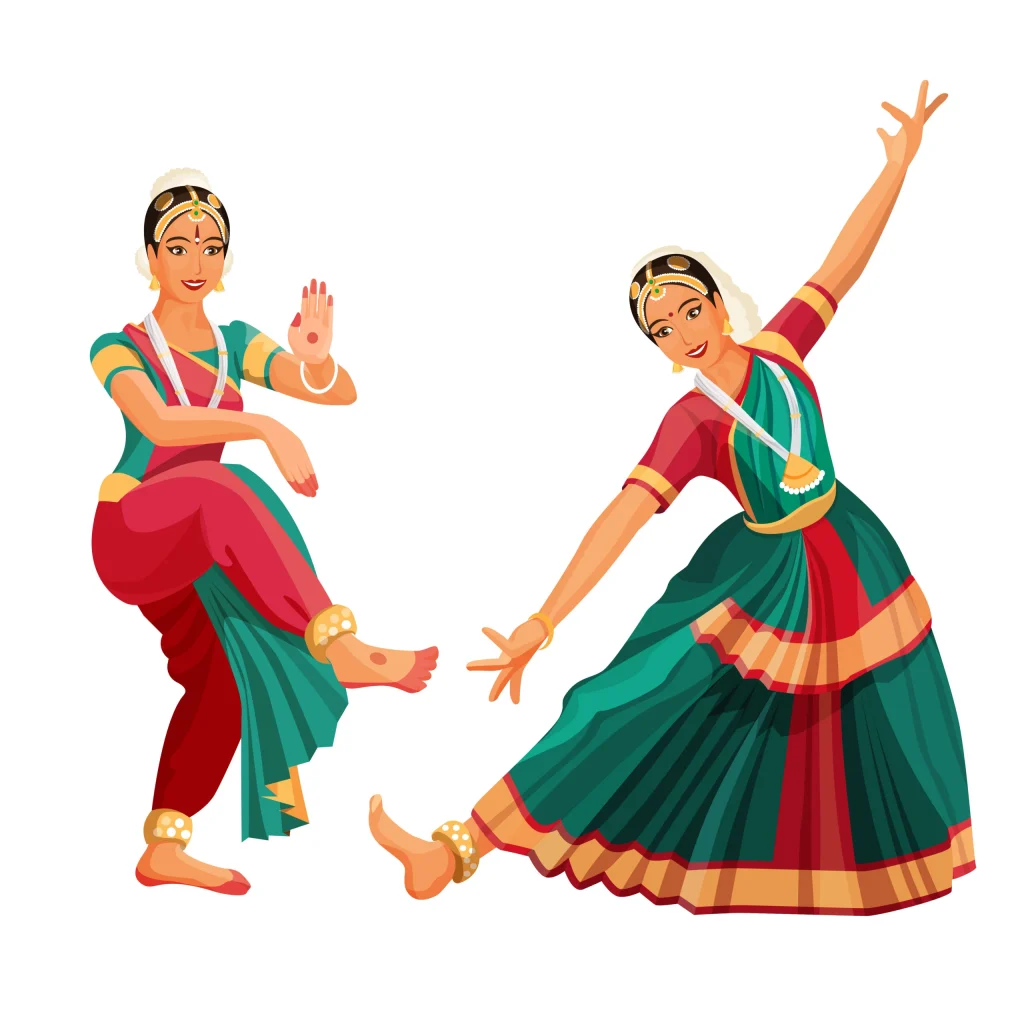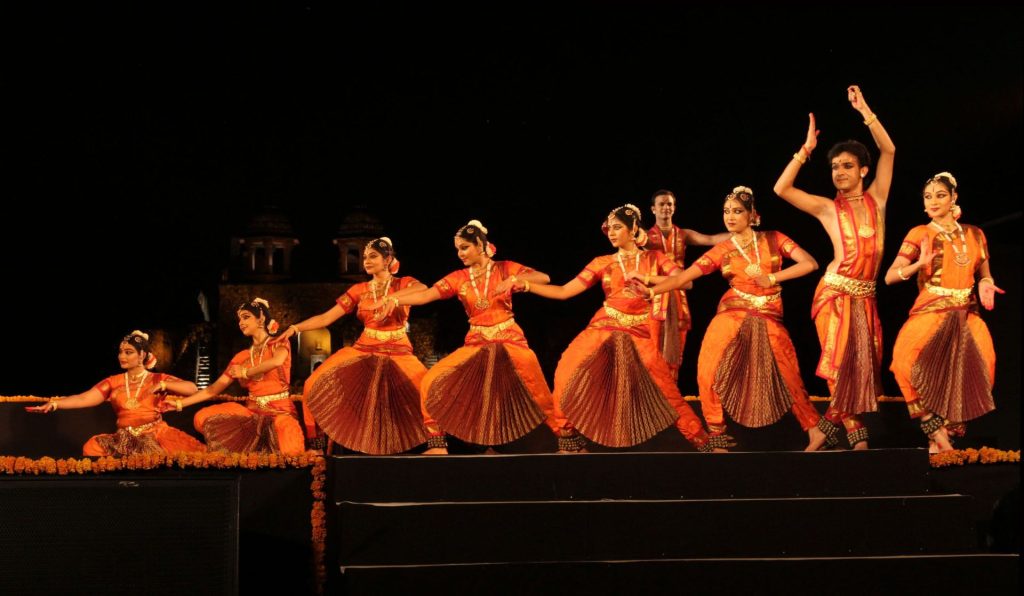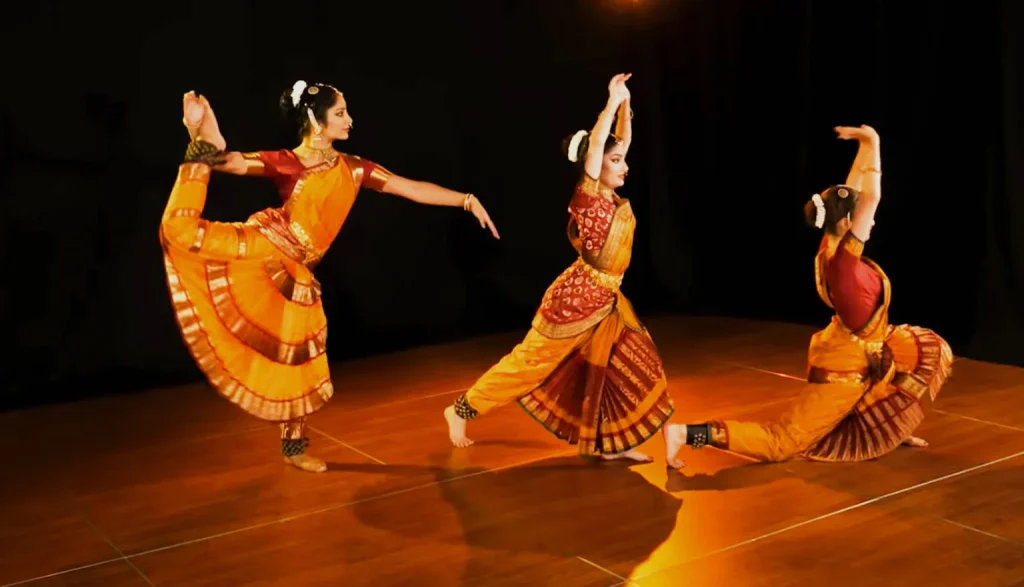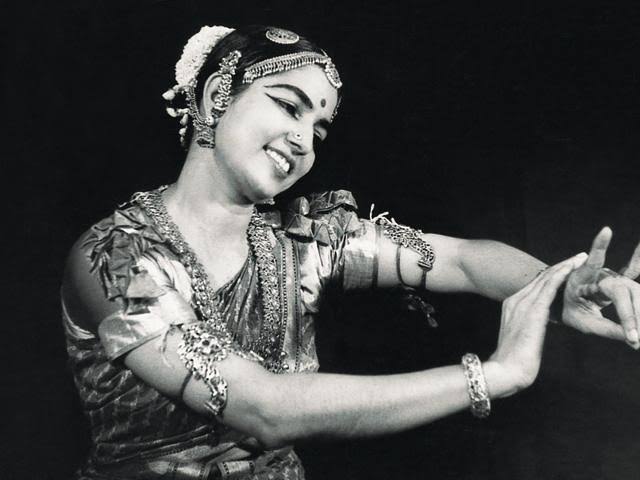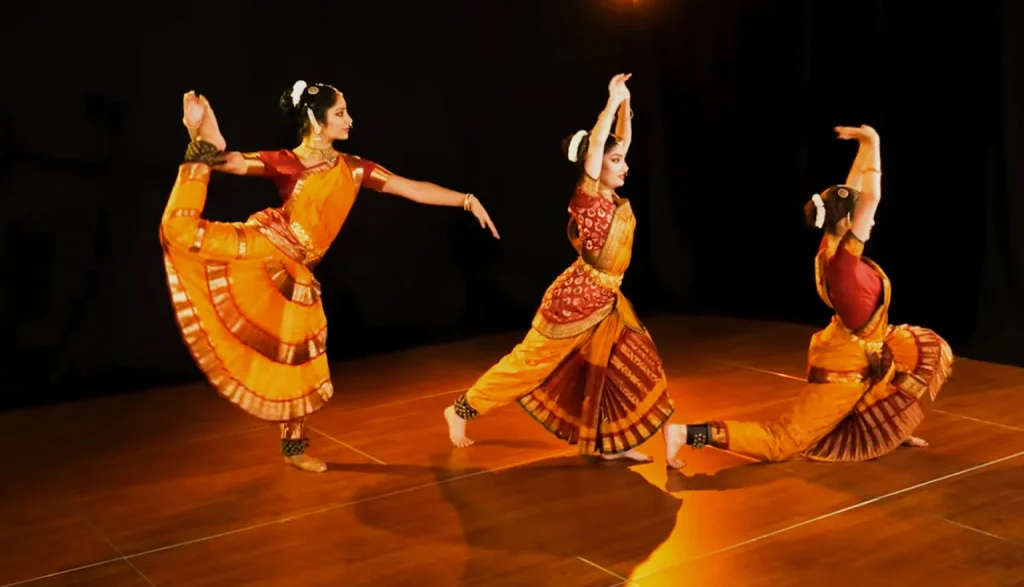Adavus form the basic dance moves in Bharatanatyam. Any classical dance form depends upon the Adavus of that dance form. In Bharatnatyam, Adavus form a very important element which needs to be learnt with great perfection. It the inculcation of the basic combination of movement of various parts of the body which is done according to the ‘tala’. It forms the main component in learning Indian dance forms.
What are Bharatnatyam Adavus?
The Adavus constitute the leaning of various steps in a dance form which are as follows:
Sthanakas – leg and foot movement
Mandalas – standing posture of the dancer
Charis – it constitutes the body movements Hastas or the Mudras- which means the hand gestures
There is a combination of the significance of the Adavus lies in the Angasuddha which means correct body posture, the Talashuddha which means the rhythm which is suited to the dance movements.
There is a stark difference in rhythms of Tandava dance and also the slow dance form which involves a graceful representation of dance in Bharatnatyam which needs to be imbibed by the dancer. This graceful dance movement is called Lasya.
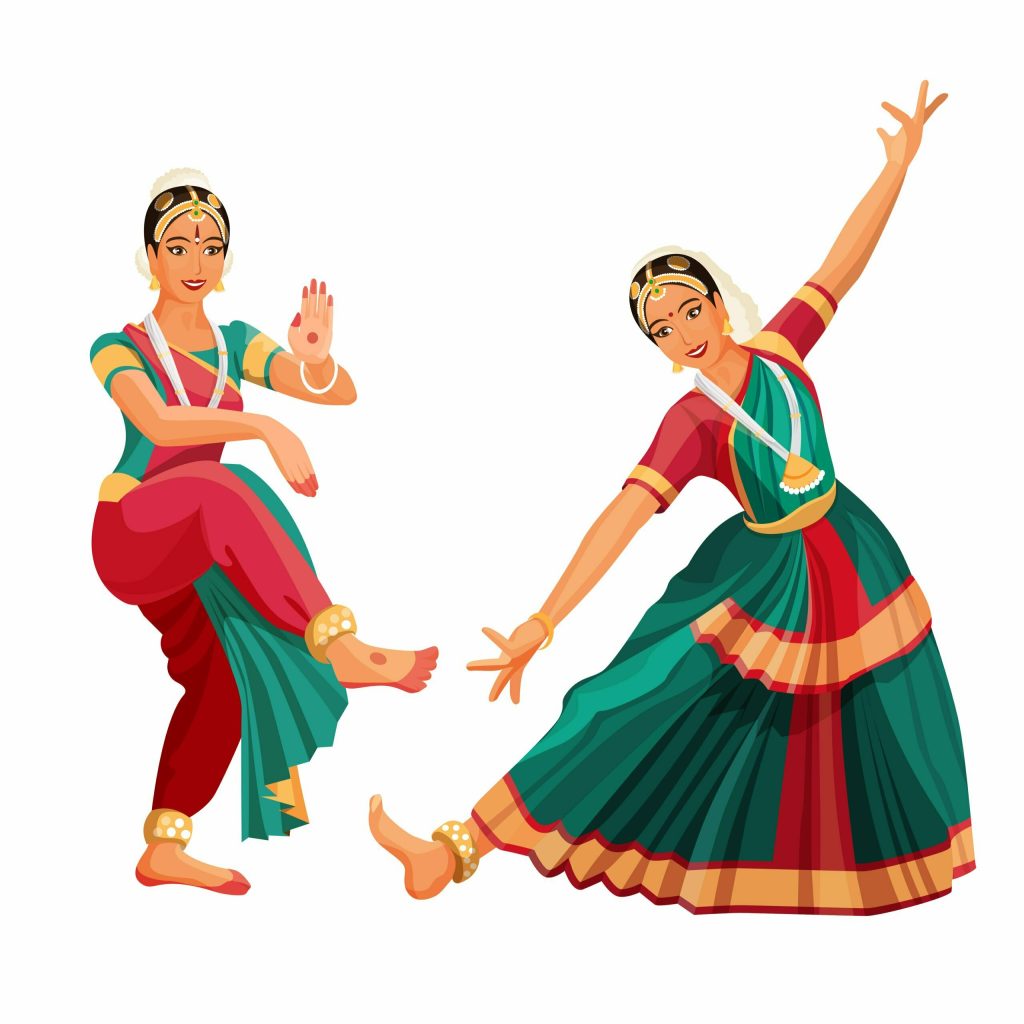
Origin of Bharatnatyam Adavus
The Adavus originated before 300-400 years back whereby the ancestor of the Tanjore Quartet had connections in the Sangita Saramrita by King Tulaja II. This can be traced back to Gangai Muttu nattuvangam. The Adavus has a long history of development and a rich tradition to look back to. It includes the most popular ones which include the Vashuvoor, Thanjavur, the Kalakshetra, Pandanallur, Mysore and so on. These were named after the place of their origination. Furthermore, there are almost 60-120 forms of Adavus which are taught by the instructor to the learner before going to the actual forms.
List of Bharatnatyam Adavus
TATTA ADAVU
This involves eight steps and includes the words “thiyaa thai”. It is also alternatively known as the ‘thai thai tham’.
NATTA ADAVU
This also involves eight steps and are denoted by the words of Thaiyyum That Tha and also the words “thaiyuum “.
VISHARU ADAVU
This is also known by various other names like the Mardita adavu, Paraval Adavu, Pakka Adavu. There are eight steps in this Adavu and the dance is performed by the words like “Ta tai tai ta” and also “Dhit tai tai ta”.
TATTI METTI ADAVU
The Tatti Metti Adavu is divided into two parts whereby “tatti” means tapping on the floor while “metti” means heels to be kept in touch with the floor. This basic step is one of the most relevant and used ones in the Bharatnatyam dance and is used mostly in Jatiswarams and Tillanas.
TIRUMANAM ADAVU
This consists of two steps and the words involved in the dance are:
- Tha “dhin gina thom”
- “thari kita thom”.
MURKA ADAVU
This is also called the Sutral Adavu which involves four steps.
This adavu includes the words:
- That thai tham
- Dhit that than
JATI ADAVU
The Jati Adavu in Bharatnatyam depicts a thalam. These include five types which are
- Tishra,
- Chatushra,
- Khanda,
- Mishra
- Sankeerna.
KUDITAMETTA ADAVU
This basic step is characterized by first jumping and then striking with the heels on the floor. These moves are done sitting in the Araimandi position giving it a nice look.
MANDI ADAVU
The knee is bent to perform this adavu has various types and are performed by the students in three different speeds.
SARIKAL ADAVU
The word sarikal means to slide and it is done by sliding one foot when the other foot is lifted. This position is also known as the Tadittam in Bharatnatyam.
Importance of Learning Bharatnatyam Adavus
Learning the basic steps of adavus in Bharatanatyam makes the dancer prepare his or her base for this dance form. That is, their stamina, the ability to learn new steps, the body posture, leg movements, hand gestures, and the idea of the “taala” and “kalam” develops which is extremely essential in classical dance forms.
The learning of the Adavu steps also provides flexibility to the body and reduces the soreness of the muscles. It makes the muscles and the bones of the body strong. Learning the basic step in the right way from the teacher and practicing them on a regular basis may prove to be helpful in the later stages of performing the Bharatanatyam dance. As a result, it helps to maintain tune with rhythm and music.
There are a huge number of Adavu steps in Bharatanatyam and may need a long time to learn but one must not hurry through the learning process because combining the hand gestures and movement, leg movement, correcting the body posture is itself not so easy.
To make the dance form more graceful, the processes must be learned one by one in accordance with rhythms or what is better known as the ‘tala.’
Aramandi – The Basic Posture in Bharatnatyam Adavus

Most of the Adavus positions are performed in the half-sitting position. Here, the knee portion of the dancer is bent a little to give a perfect shape for the other mudras ( hand gestures) and steps to be performed. In this position, the feet remains apart on other sides forming a small amount of difference between both the legs.
This step also makes the dance and the costume of the dance look more appealing and beautiful. During this posture, the pleats which are worn by the dancer in the lower part of the dancer’s body looks beautiful. As a matter of fact, the vibrant colours of the dress come out in a beautiful fashion.
You can check out Bharatnatyam Postures to know more about postures!
Three Speeds of Adavus
The Adavus are performed in three speeds which are also known as the ‘kalams’. These constitute of performing in the slow tempo known as the ‘Bilambita laya’, the medium speed which is called the ‘Madhya laya’, the ‘Druta laya’ or in a faster tempo.
These needs practice in a consequent term. First, the dancer must learn in a slow tempo, then in the middle tempo and at last in a faster tempo.
There are many benefits of learning Bharatanatyam dance. You should visit this lesson to learn more about it.
Share with your friends
